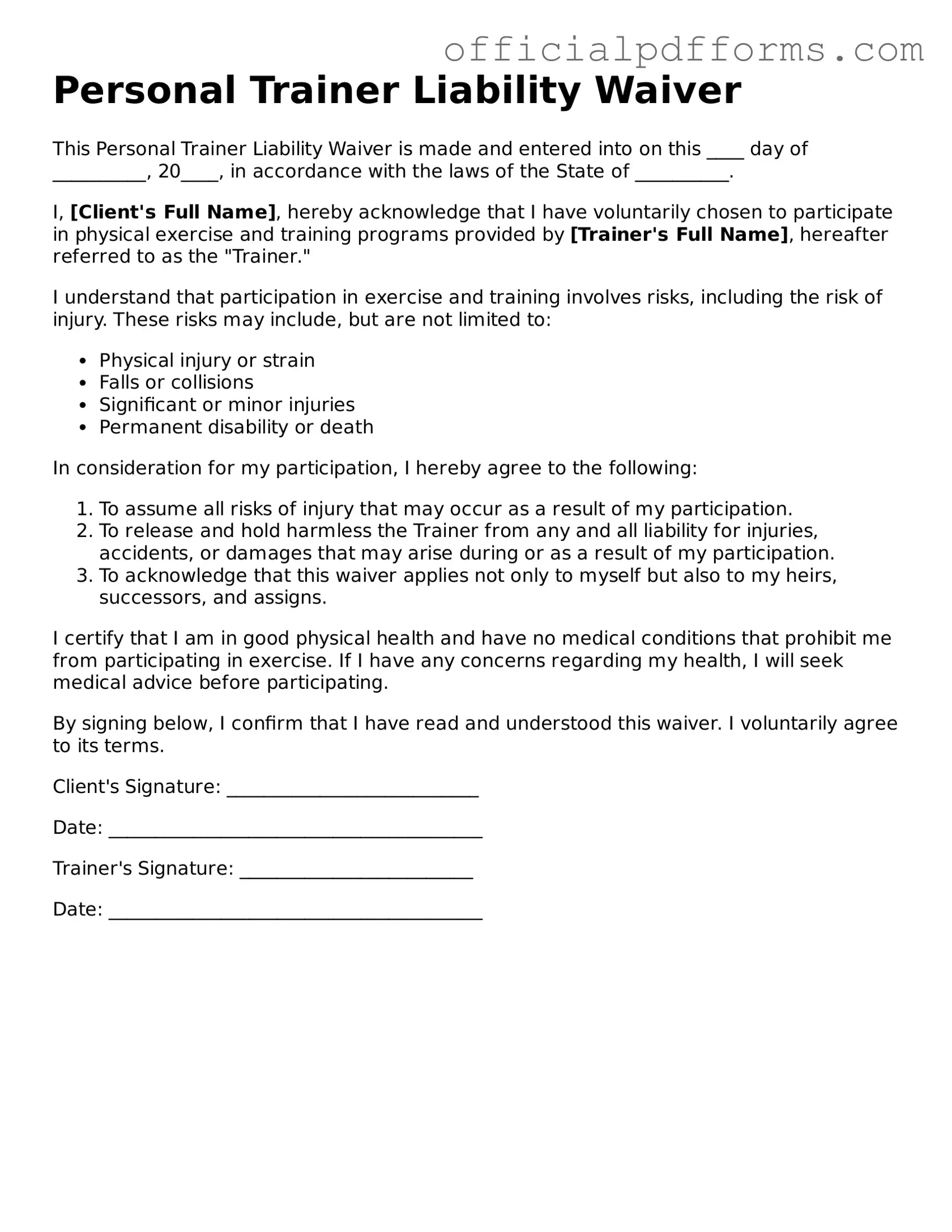What is a Personal Trainer Liability Waiver?
A Personal Trainer Liability Waiver is a legal document designed to protect personal trainers from liability in case of injuries or accidents that may occur during training sessions. By signing this waiver, clients acknowledge the inherent risks associated with physical activities and agree not to hold the trainer responsible for any potential injuries that may arise.
Why should I sign a liability waiver?
Signing a liability waiver is important for several reasons:
-
Informed Consent:
It ensures that you understand the risks involved in personal training.
-
Legal Protection:
It provides legal protection for trainers, allowing them to focus on helping you achieve your fitness goals without the constant worry of potential lawsuits.
-
Clarity of Expectations:
It clarifies the responsibilities of both the trainer and the client, fostering a better training relationship.
What should I consider before signing the waiver?
Before signing the waiver, consider the following:
-
Read the document thoroughly to understand what you are agreeing to.
-
Ask questions if any part of the waiver is unclear.
-
Evaluate your own health status and any pre-existing conditions that may affect your training.
Can I still sue my personal trainer after signing the waiver?
While a liability waiver limits the trainer's liability, it does not completely eliminate your right to sue. If negligence can be proven—such as if the trainer failed to provide a safe training environment or did not adhere to professional standards—legal action may still be possible. However, the waiver may significantly weaken your case.
Is the waiver enforceable in court?
Generally, liability waivers are enforceable in court, but their enforceability can depend on various factors, including:
-
The clarity of the language used in the waiver.
-
The specific laws of your state regarding liability waivers.
-
Whether the waiver was signed voluntarily and without coercion.
What happens if I don't sign the waiver?
If you choose not to sign the waiver, the personal trainer may not be able to provide you with services. Most trainers require this waiver to protect themselves legally, and without it, they may be unable to take on the risk associated with training you.
Can I revoke my waiver after signing it?
Once signed, a waiver is typically considered binding. However, you may be able to revoke it in certain circumstances, such as if you can demonstrate a change in your health status or if you no longer feel comfortable with the training environment. It is advisable to discuss any concerns with your trainer or seek legal advice before attempting to revoke a waiver.
